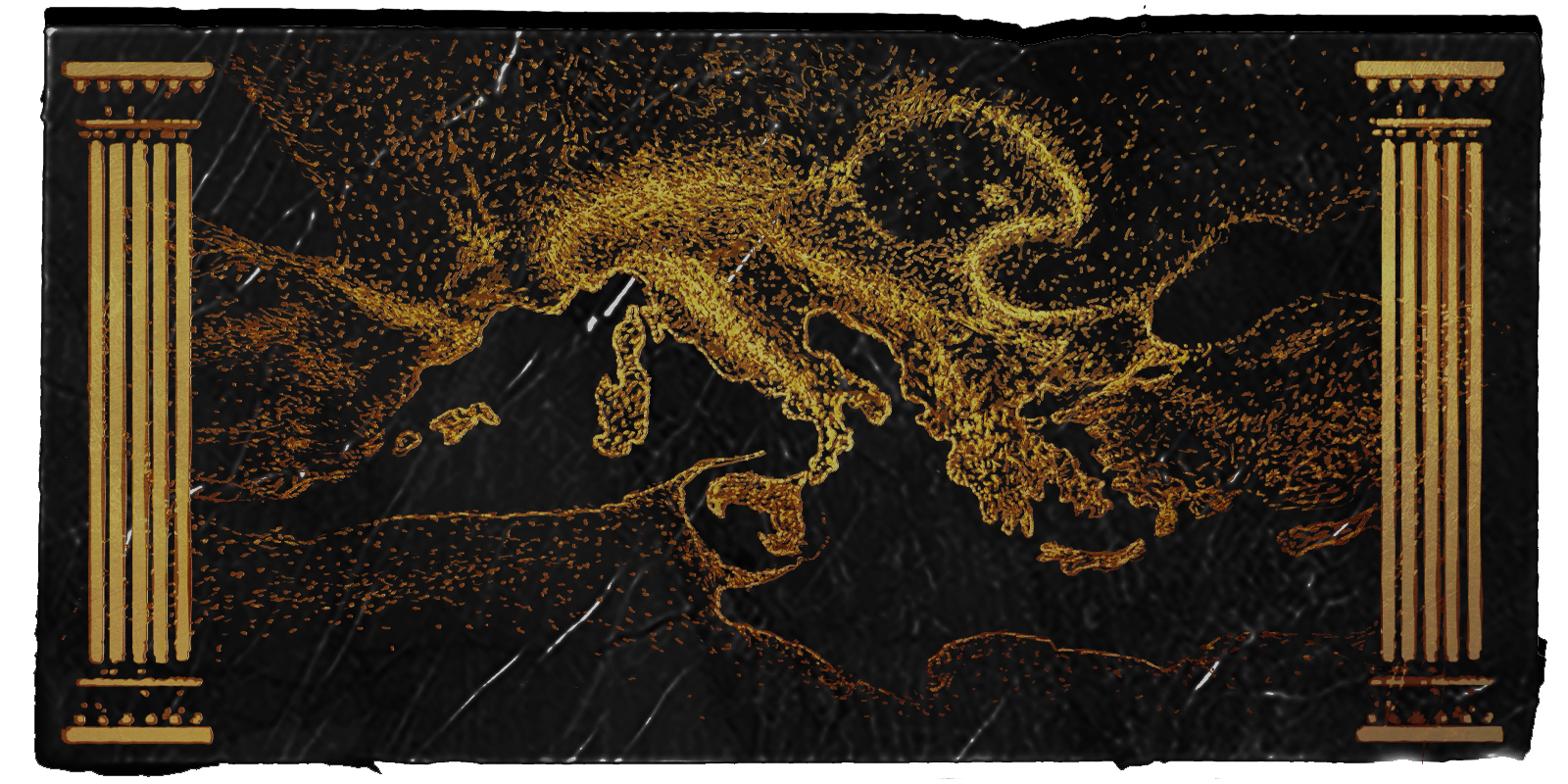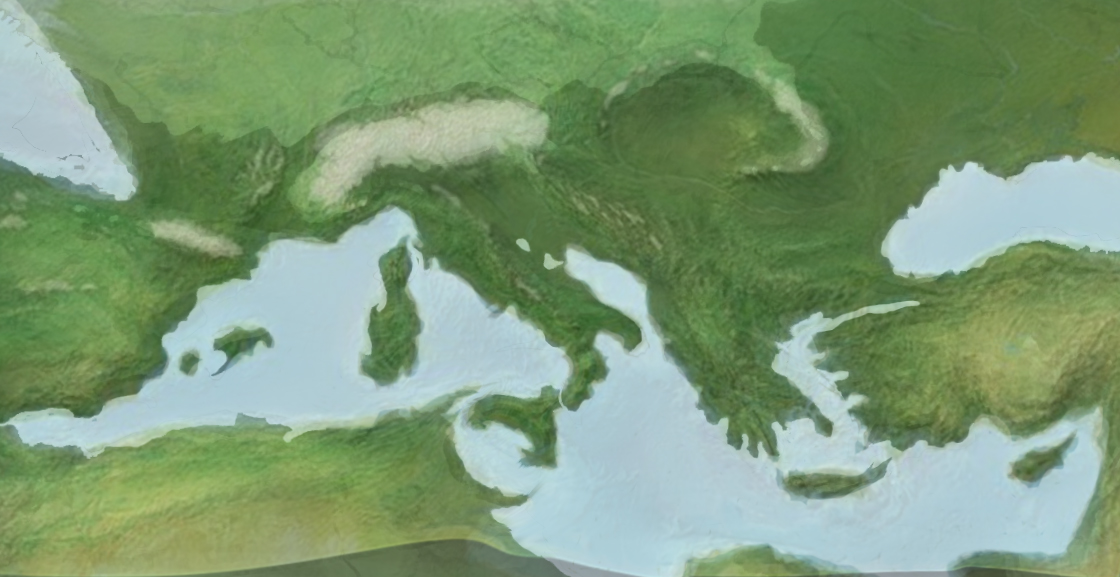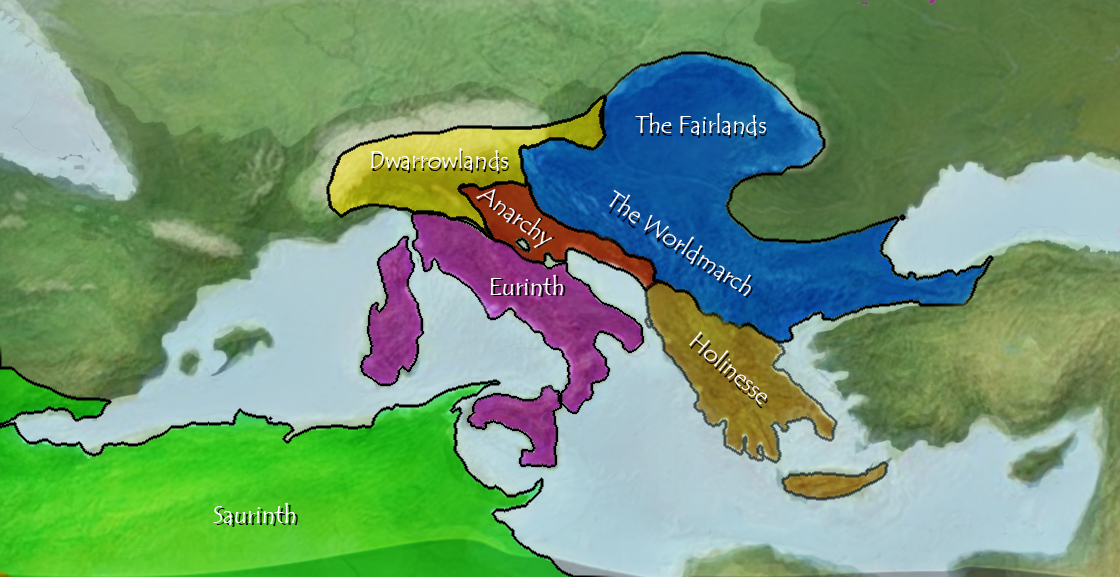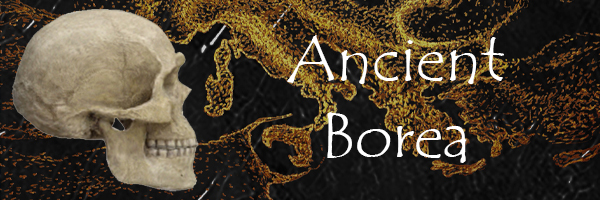
The Borean World
Copyright © 1999-2020 C.E. by Dustin Jon Scott
Introduction
Ancient Borea, or The Palæoboreanic World, refers to a period of Mediterranean history between c. 400,000 and 300,000 B.C.E.
Ancient Borea, or rather the mythological world ellucidated in The Palæoboreanica (the primary source of ancient Borean mythology) is a setting I created for The Sovereignty Cycle, with the intention of replacing the alternate history “place holder” setting I used when I began writing the first story of that series.
The Borean World is the world according to the ancient Palæoboreanic people. While at least some of the locations seem to have been based in fact (i.e., territories of neighboring and/or historical nations which actually existed), the Borean World was highly mythologized, with several foreign realms assumed to be inhabited by magical races and dangerous monsters.


Eurinth
Eurinth was a confederation of numerous smaller entities, known as “shire-states” or “county-states”. These were conceptually somewhere between city-states and nation-states. Most were made of a three smallish cities, two medium-sized city, or one large city, and generally also included a handful of smaller towns and hamlets. These shire-states generally elected a high king to represent them, with each shire-state getting a vote. How each shire-state determined internally whom they’d vote for differed from shire to shire, as each shire-state was free to structure its own government in the manner that its citizens wished. If a particular shire-state decided they didn’t like democracy and prefered hereditary leaders making such choices for them, then that shire was free to have its king or lord vote for whomever he wished as high king.
This system of government has occasionally been referred to as “libertarian feudalism” or “democratic feudalism”.
For the most part, the various Eurinthian shire-states were responsible for mustering their own military force, though in times of need these were required by treaty to band together, lest any uncooperative shire-state be ejected from the confederacy.
In addition, nearly every Eurinthian shire-state had a functioning monastery, and the Paladins (warrior-priests and warrior-priestesses ultimately answerable to the high priesthood based out of the foreign nation of Holinesse) were expected to act as a military force for Eurinth whenever required.
Holinesse
Ruled by a Witch-King and Witch-Queen, who would together serve a term of thirteen years before another pair would be elected. In order to be elligible for election, one had to be an Elder (a priest or priestess of at least thirteen years) and a member of the High Priesthood. The Elders would vote for thirteen individuals amongst their own ranks to serve on the Council of Elders who would act as a senate of sorts.
While this may sound like a clear theocracy, the people of Holinesse regarded their country as apolotical, lacking an official governing body. This is because, ostensibly, the priesthood had no direct authority over cowans (non-clergy). However, the Paladins (warrior-priests and warrior-priestesses of the same temple-system as the dedicated priests and priestesses) served as security forces for the priesthood both within and without the borders of Holinesse, functioning as either military or police forces as the situation might necessitate, making the nation a functional theocracy even if its citizens didn’t see it that way. In defense of the view that their nation had no true government, the religion had functional monasteries throughout Borea, with Holinesse merely being their hub. Thus, the nation of Holinesse was somewhat analogous to modern-day Vatican City.
Anarchy
An demilitarized, apolitical neutral zone separating the Fairlands from Eurinth and (formerly) the kingdom of Reynes, the Freedom of Anarchy had very few cities, mostly clustered in the southern half of the Freedom, and those cities that did exist had anarcho-syndicalist governments. People in more rural parts of the Freedom were mostly hunter-gatherers, who just like hunter-gatherer societies in later H. sapiens were characteristically peaceful and had no need of government in their day-to-day lives.
The reason for the establishment of the Freedom had primarily to do with skirmishes along the former border between Boreans and the Unseelie Court, with occasional threats from posturing Eurinthian High Kings indicating that if the Seelie Court of the Fairlands did not do more to control the Unseelie Court, it may lead to war. Holinesse, a close ally of both nations, was able to convince Eurinth and the Fairlands to pull back from their common borders and establish a “buffer zone” between them in order to preserve the peace.
The Fairlands
A mysterious land that lies beyond the Worldmarch northeast of Eurinth and north of Holinesse. Generally ruled by the Seelie Court, although there have been times when the Unseelie Court was in control of the Fairlands.
The Dwarrowlands
Ruled by an alliance of Dwarven kingdoms under the mountains.
Borean Cosmology
For more information, see Borean Cosmology

